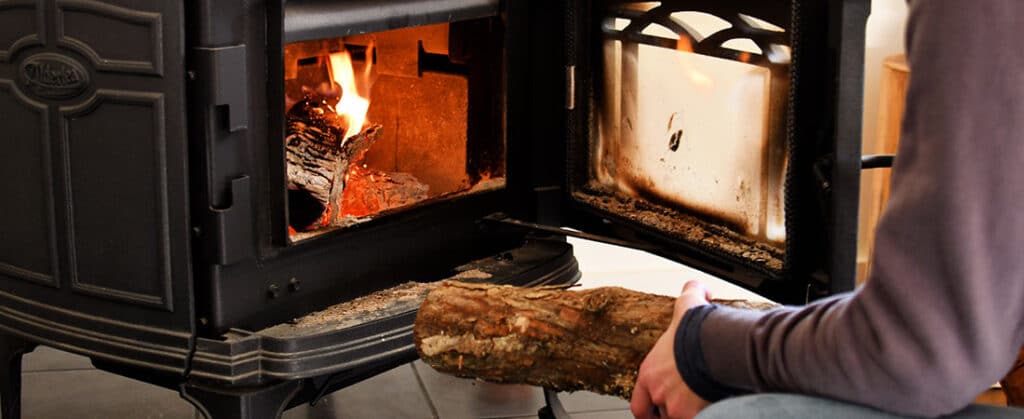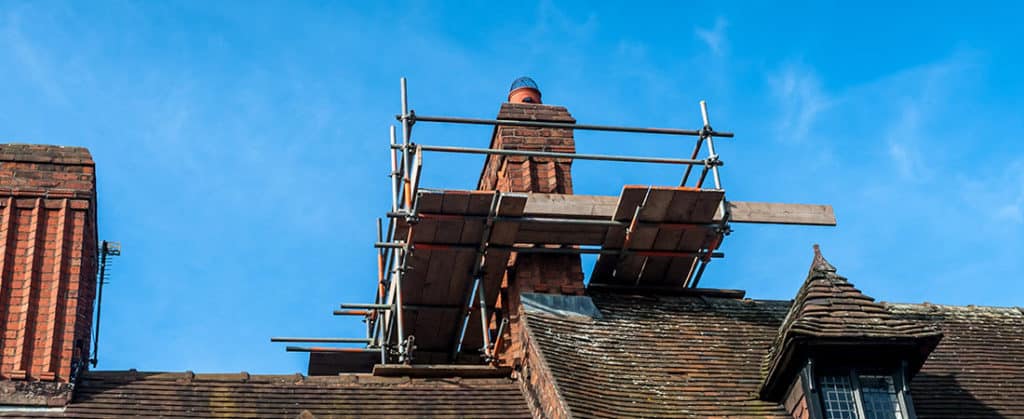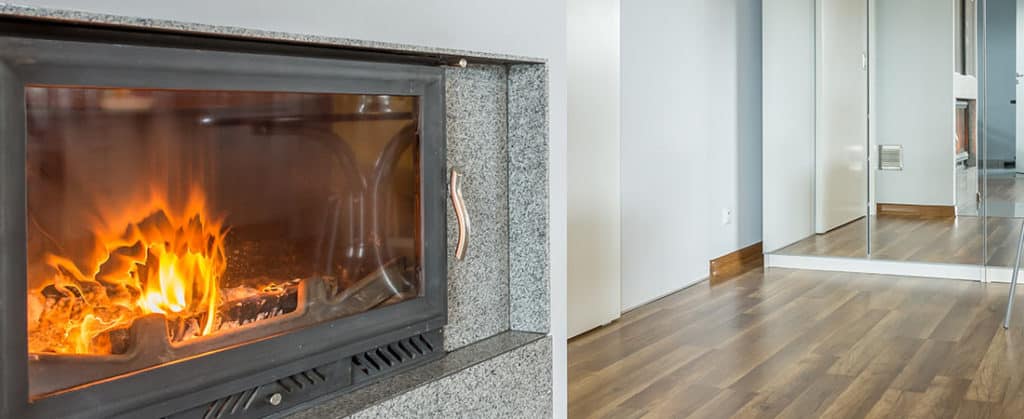While a wood-burning fireplace brings warmth and comfort to a home throughout the winter, safety should always be a priority. Thankfully, there are plenty of ways to ensure your wood-burning fireplace is safe. These ways include:
Check for creosote buildup.
Creosote is a chemical mass of carbon produced by burning wood, tar, or fossil fuels.
When wood is burned, combustion byproducts such as water vapor, smoke, fumes, and unburned wood particles rise to the chimney.
Creosote can slowly build up in the chimney, and you’d never know it was there from the outside.
If not removed, creosote can form a thick layer of debris in the flue and chimney. Because most chimney fires begin in the smoke chamber/smoke shelf area, it is critical to clean such areas.
Creosote ignites at 451 degrees Fahrenheit and, once ignited, expands like foam sealant, reaching temperatures of over 2,000 degrees Fahrenheit in less than a minute.
To protect your home and property, you should regularly inspect and clean your chimney if dirty. You can do the work or hire chimney cleaning services to help you out.
To reduce the creosote deposited on your chimney, you should only burn dry, seasoned wood: remember that moisture in the wood adds to creosote production. Using well-seasoned hardwoods that have been cured for at least six months reduces the buildup.
You should ensure that you have a good air supply to the fire by effectively employing a damper and keeping the air vents open. A hot, well-ventilated fire helps to burn the wood, reducing creosote accumulation.
You should avoid slow-burning flames at all times because they lead to excessive airflow restriction that results in smoldering fires, which produce more creosote.
Clean out the ashes before use.
You should clear out all the ashes from the firebox before piling wood for the first fireplace fire.
The cool thing is that you don’t need to be complex about how you go about it. Sweep or vacuum the cold ashes outdoors and dispose of them.
Use the right wood
The type of wood you choose determines the quality of fire you get and the amount of creosote deposited in your chimney.
For the best outcome, go with hardwoods such as oak, maple, birch, ash, and hickory. They are denser and burn for longer periods, producing greater heat and requiring less frequent reloading.
Softwoods, such as pine and fir, burn more quickly and produce less heat, but you can use them as kindling or mix them with hardwoods to start a fire more quickly.
Burning wood with a high moisture level produces less heat and increases creosote buildup. Use well-seasoned firewood with a moisture percentage of 20% or less for the best outcome.
This is because seasoned wood burns more efficiently, generates more heat, and produces less creosote. You should store your firewood in a dry, well-ventilated space for at least six months before use.
You should always burn clean, untreated wood that has yet to be painted, varnished, or coated. You should note that when you burn treated or painted wood, it emits harmful compounds. You also should avoid burning wood with a lot of bark since it can lead to a lot of creosote buildup.
Cut your firewood into lengths appropriate for your fireplace or wood burner. For ideal results, pieces should be 3 to 6 inches long and trimmed to fit correctly inside the firebox. Remember that smaller pieces ignite quickly, whereas larger logs burn for a longer period of time.
Cap the chimney
When you cap the chimney, you keep animals from entering, minimize downdrafts, and prevent trash or moisture from entering. Here are some things to think about while capping a chimney.
There are three types of chimney caps: single-flue caps, multi-flue caps, and spark arrestor caps. Choose a cap that meets your requirements. Consider the number of flues, the desired amount of protection, and any local building laws or requirements you must adhere to.
Chimney caps come in a variety of materials, including stainless steel, copper, and galvanized steel. Choose a material that is long-lasting, weather-resistant, and appropriate for your chimney and surrounding environment.
While capping the chimney can help prevent some problems, it’s still necessary to have your chimney examined and cleaned by a professional regularly. They can detect and correct any faults with the chimney and ensure its effective operation.
Keep the fire small
Small fireplace fires produce less smoke and creosote buildup. When starting a fire, place the logs toward the back of the wood-burning fireplace and use kindling rather than flammable substances to start the fire.
You also should arrange the smaller firewood pieces in a compact configuration. Stacking the logs too high or close together can cause a larger fire.
If possible, reduce the quantity of oxygen feeding the fire by adjusting the air vents or dampers on your fireplace or wood-burning stove. With less oxygen, the flame is smaller, and the burn is slower.
Add just a few pieces at a time when feeding wood to the fire. Avoid adding large logs, which could enlarge the fire.
Always monitor the fire to ensure it remains small and under control.
Ensure that the alarms are working.
Check that your smoke and carbon monoxide detectors are operational before starting a fire.
Check that the carbon monoxide detector is powered on. Some sensors are battery-powered, while others are hooked into your home’s electrical system.
Confirm that the batteries are in good working order or that the power supply is not interrupted.
While checking the detectors, chimney contractors Upper Marboro recommend paying attention to the alarm indicators. Usually, there are lights or display screens indicating whether the sensor is working correctly.
Confirm that the test causes these indications to light up, indicating that the detector is active. If not working, fix it or have a professional look at it.



